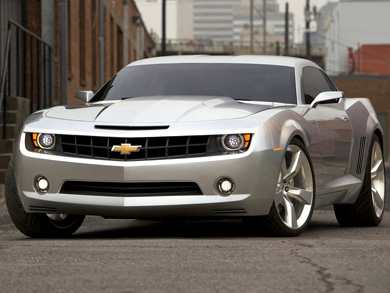|
|
|
(NAPSI)—As gas prices continue to fluctuate, it’s always a good time to evaluate your driving habits and take steps to keep yourself and your car on the road to savings at the pump. To demonstrate the 10 common mistakes that drivers make to affect fuel economy, General Motors conducted a driving test. Two of their fuel economy engineers, Ann Wenzlick and Beth Nunning, drove identical Chevrolet Cruze LTs on a typical workday commute. They each drove 20 minutes with city and highway driving, including a stop for coffee.
Wenzlick averaged 37 miles per gallon using efficient driving habits and
by maintaining her car and Nunning averaged 21 miles per gallon. On
average, that was a $100 price difference at the pump. Here are some of
their tips based on what they learned:
• Get out of the drive-through lane. Idling for 15 minutes burns through about a quarter of a gallon of gas. Parking your car and going into the store to get what you want can actually help to save money on gas. • Take it easy. Jumping on the gas at every light, only to hit the brakes, isn’t going to get you home any faster. However, driving smoothly can improve your mileage by 20 percent. • Drive 70, not 80. It may not sound like much, but it’s likely a 10-mph difference can save you up to four miles per gallon when driving on the highway. • Use cruise control. It turns out that maintaining a constant speed over time is much more efficient than speeding up and slowing down over and over again. • Roll up the windows. At slower speeds, turning off the air-conditioning can save you a little, but on the highway, it’s better to roll up the windows. If the windows are down, the increased air pressure can slow the car and consume more energy than air-conditioning will. • Get rid of that extra stuff in the trunk of your car. Every 100 pounds of weight you carry in the car can reduce fuel economy by 2 percent. • Don’t ignore the “check engine” light. Serious engine problems can cut your fuel economy by up to 40 percent. • Try to bundle your errands. Plan ahead. An engine at operating temperature can be up to 50 percent more efficient than a cold engine. So, when possible, it’s much better to run five errands in an afternoon than running one errand every day of the week. • Make your tires last. Properly inflated tires will improve your fuel economy and they will last longer. Also, rotate tires at manufacturer-recommended intervals. • Use the grade of motor oil recommended for your vehicle; the same goes for the octane level of gasoline. Motor oil that says “Energy Conserving” on the performance symbol of the American Petroleum Institute contains friction-reducing additives that can improve fuel economy. For most cars, the recommended gasoline is regular octane. In most cases, using a higher-than-recommended-octane gas offers no benefit-and costs more. • Ditch the roof ornaments. At highway speeds, up to a third of your fuel is used to overcome wind resistance, so even small changes to your vehicle’s aerodynamics can have a big impact in fuel economy. • It pays to be prudent. According to Roger Clark, manager of the GM Energy Center, “With a well-maintained car, the best drivers get up to 25 percent more miles per gallon than average. When you combine a poorly maintained car with inefficient driving habits, the fuel economy of the worst drivers can be 50 percent below average.” Clark added, “The fuel economy of every vehicle is greatly affected by how you drive and how you care for your vehicle. Often, relatively small changes to your driving habits and vehicle maintenance can make the difference between being on the bottom or the top of the fuel-economy scale.” |

No comments:
Post a Comment